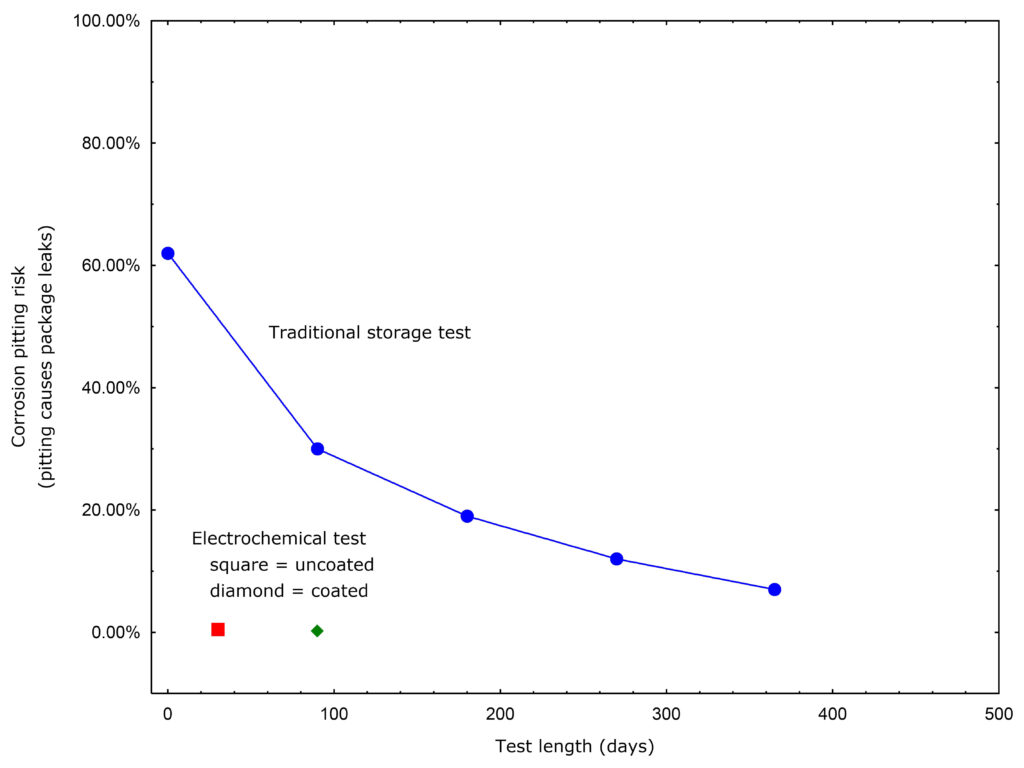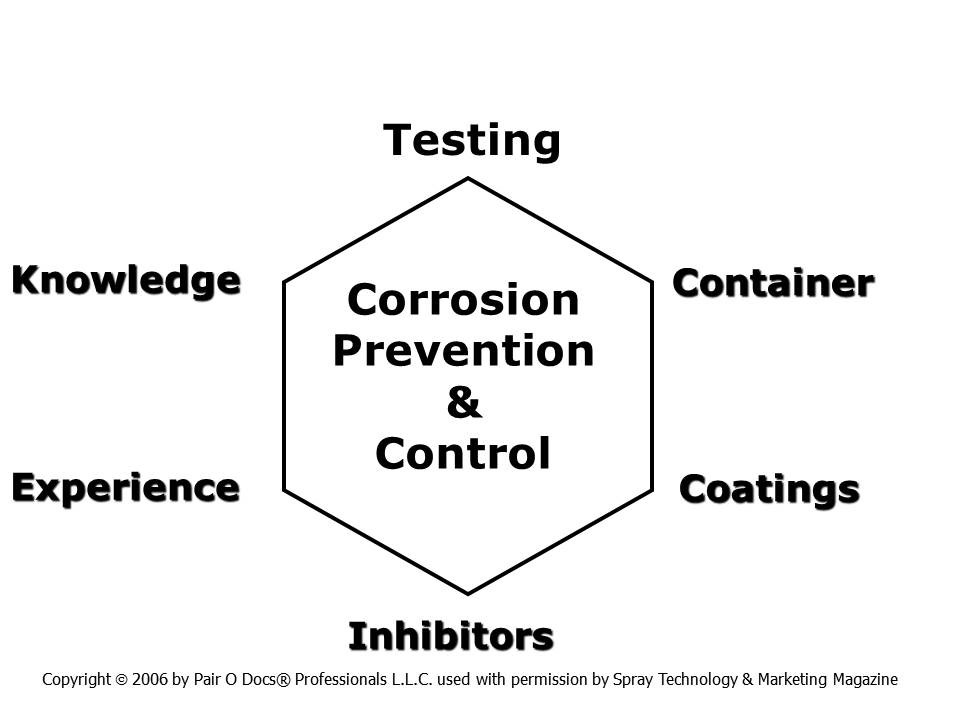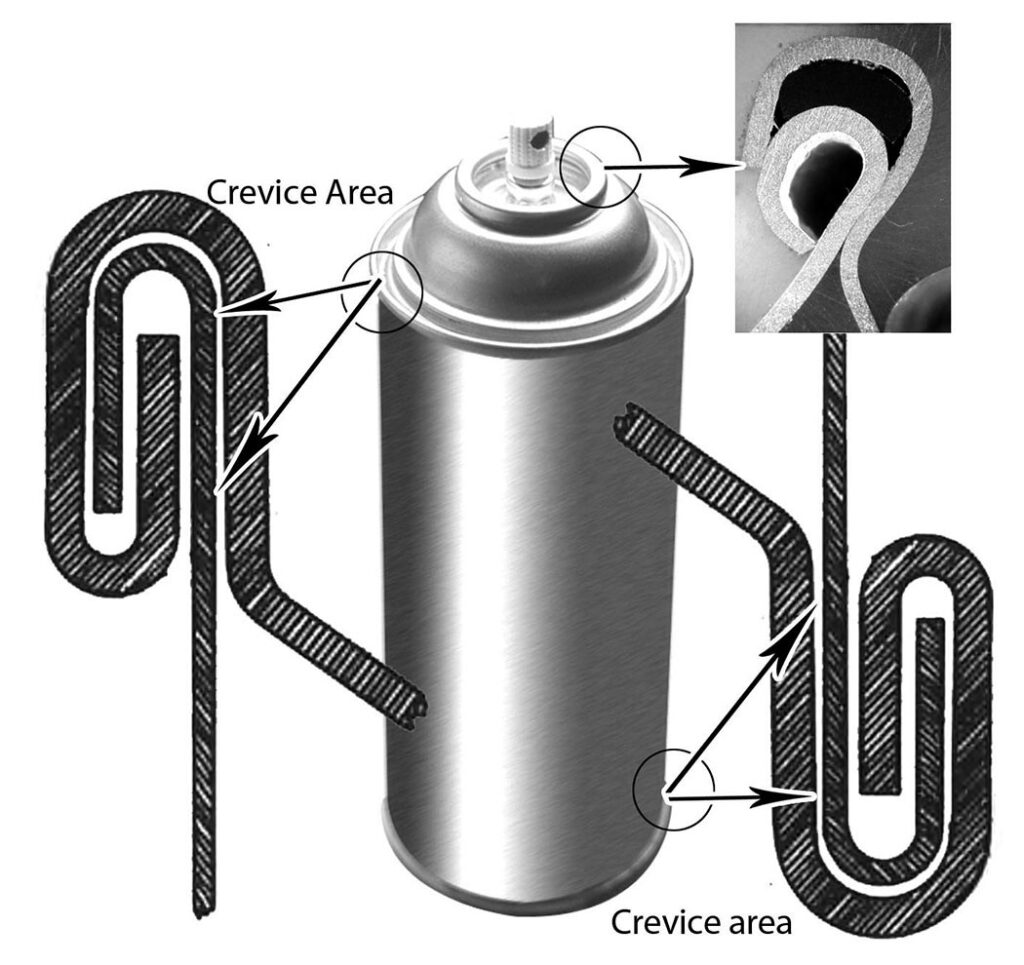Written on: September 1, 2022 by W. Stephen Tait
Hello, everyone. Corrosion prevention and control for all types of spray packaging is a continuous process and not a one-time event.
The risk of corrosion is always greater than zero and the risk could be as high as approximately 62% when there is no corrosion data for new formulas and derivatives of current formulas (line extensions). Figure 1 is a general risk curve for pitting corrosion in spray packages.

Figure 1: The estimated risk of pitting corrosion as a function of test length.
The graphs in Figure 1 illustrate that the risk of corrosion is significant when:
• There is no corrosion data on a new formula or a derivative formula;
• Risk decreases as the corrosion test length increases (i.e., the amount of data collected increases); and
• Risk decreases more rapidly with electrochemical corrosion tests to a lower magnitude than the risk for a corresponding storage test.
Why is corrosion risk always a concern?
Very small changes in formula chemistry can cause very large changes in corrosion behavior. Corrosion can unexpectedly appear with changes in the concentrations of formula ingredients either by design or by manufacturing batch-to-batch variations. Corrosion inhibitors have an effective concentration range above which the inhibitor no longer effectively controls or prevents corrosion and below which the inhibitor no longer effectively controls or prevents corrosion. Thus, corrosion inhibitor concentration variations actually cause corrosion, particularly when the effective concentration range is small.
Substituting formula ingredients from alternate suppliers could also cause unexpected corrosion in spray packaging. As well, contamination, such as water in anhydrous formulas, is a common cause for spray package corrosion.
Elements of an effective & comprehensive prevention program
A comprehensive corrosion control and prevention program consists of several elements, as illustrated in Figure 2.
Below is a brief description for each of the elements in Figure 2 (going clockwise from the top):

Figure 2: Elements of a comprehensive corrosion control and prevention program.
• Testing: corrosion testing is used to determine package-formula compatibility
• Container: the most corrosion-resistant forms of packaging components are selected with corrosion tests
• Coatings: coatings for spray package components are selected with corrosion tests
• Inhibitors: the most effective corrosion inhibitor and its effective concentration range are selected and determined with corrosion tests
• Experience & Knowledge: a corporate knowledge and experience database is developed and maintained to avoid formula-package combinations and formula ingredients that have a high probability of causing spray package corrosion.
Two types of corrosion testing are available for a comprehensive corrosion prevention and control program. The first is the traditional corrosion test via a storage stability test.
I strongly recommend at least one year of storage testing before making new spray formulas and derivative spray formulas for commercial use. A properly designed, one-year-long storage test typically has a 2% to 7% empirical risk that corrosion will occur in commercial containers.
Electrochemical corrosion testing is the other type of spray package corrosion test. A properly designed electrochemical test can be completed in 1–3 months with an associated statistical risk that is less than 1%. In other words, a properly designed electrochemical test can provide lower risk results than one-year storage in significantly less time with a lower statistical risk.
Understandably, corrosion is not a main focus of most consumer packaged goods companies. However, ignoring corrosion risks does not make them disappear and ignoring risk could disrupt a product’s marketing with a corresponding loss of income and loss of customer/consumer confidence in the product. In most instances, corrosion testing is significantly cheaper than corrosion failure.

Consequently, corrosion prevention and control for spray packaging is a continuous process and not a one-time event.
Thanks for your interest and I’ll see you October. Contact me at 608-831-2076; rustdr@pairodocspro.com or from our two websites: pairodocspro.com and aristartec.com. SPRAY